
International Sculpture Competition: The Unknown Political Prisoner, Catalog, 1953, Image provided by Kimchongyung Museum
International Sculpture Competition
* Source: MMCA
Related
-
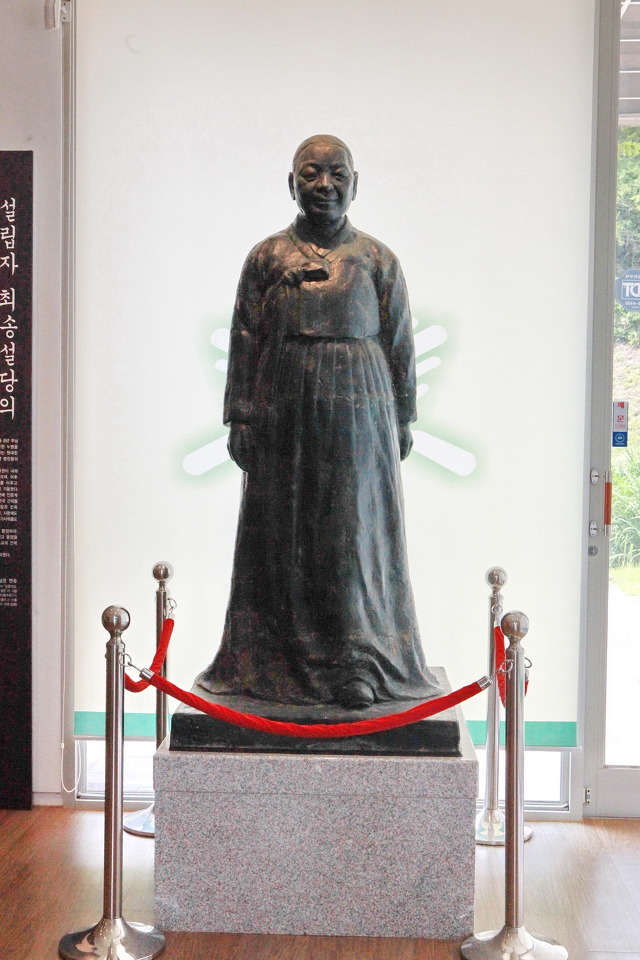
Yun Hyojoong
Yun Hyojoong (1917-1967, pen name Buljae) was born in Jangdan, Gyeonggi-do. He learned sculpture from Kim Bokjin and graduated from the department of sculpture at Tokyo School of Fine Arts. In the 1940s, his work Purification was selected for the 2600th Anniversary Celebration Art Exhibition and The Earth was selected for the Joseon Art Exhibition [Joseon misul jeollamhoe]. His pro-Japanese works, such as Senninbari (1943) and Sound of the Bow String (1944), won special prizes at the Joseon Art Exhibition. In 1945, he became a founding member of the Association of Joseon Sculpture and an associate professor at the newly established department of sculpture at Hongik University in 1949. In organisational rather than creative terms he significantly contributed to the development of post-war Korean art as an administrator and educator by serving as a vice chairman of the Great Korean Art Association. His early works were mainly wooden body statues based on realism. He created the Admiral Yi Sun-sin Statue in Jinhae city where Naval Base Command located during the Korean war. In the 1950s, he actively participated in the National Art Exhibition (Gukjeon), and mainly focused on the creation of statues of political figures, such as the Min Yeonghwan Statue and the Syngman Rhee Statue. He is recognised as a sculptor who combined local materials with modern formal influences, and his works are defined by qualities such as precise proportion, dynamic movement, and sophisticated technique.
-
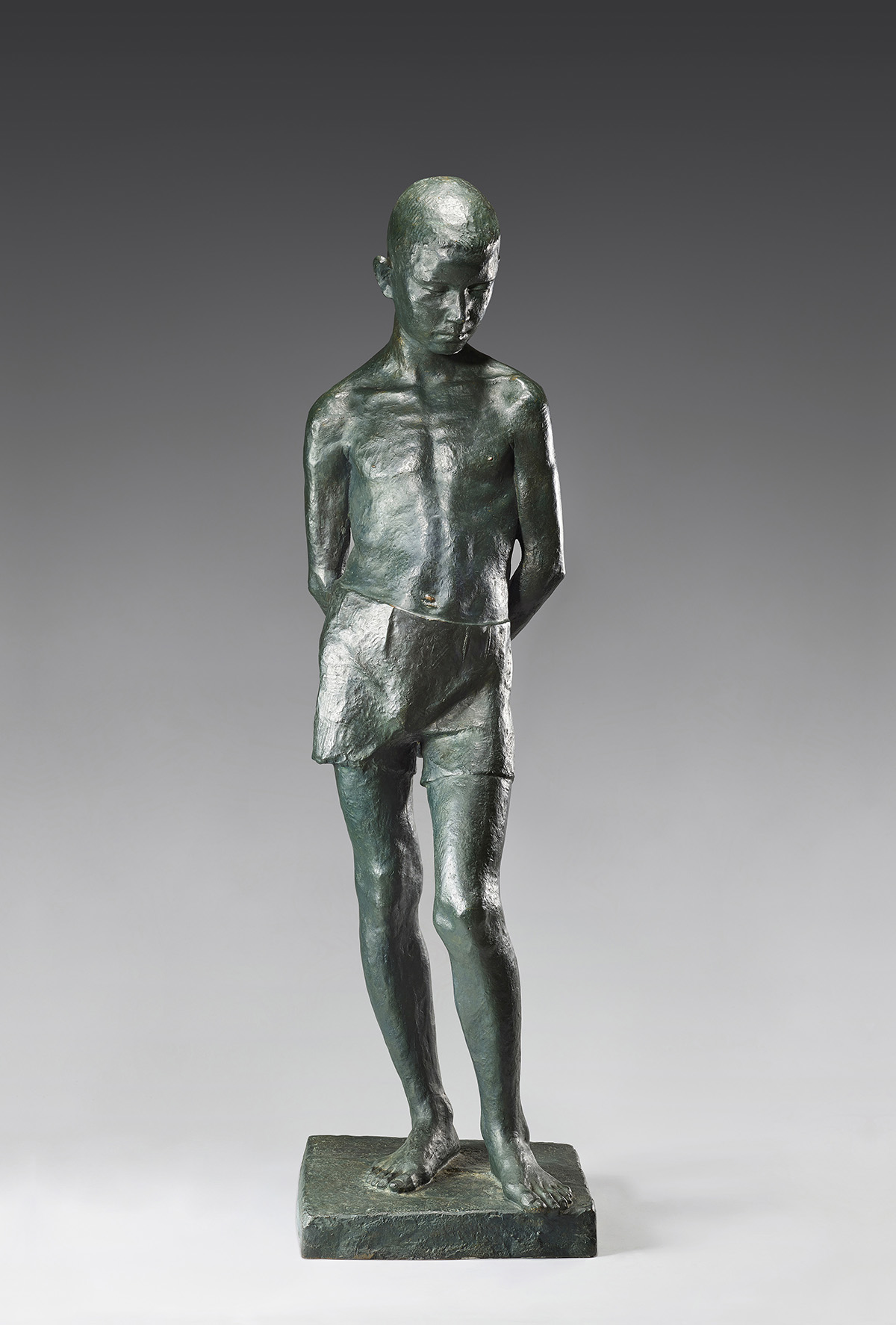
Kim Kyongseung
Kim Kyongseung (1915-1992, pen name Tanwol) was born in Kaesong, Gyeonggi-do in 1915. At Songdo High School, he learned drawing from Hwang Suljo, who had graduated from the Western painting department at Tokyo School of Fine Arts. Kim desired to become the Michelangelo of Korea. After graduating in 1933, he pursued his dream in Japan by attending Kawabata Art School, following in the footsteps of his older brother Kim Insoong. He studied drawing and entered the department of sculpture and casting at Tokyo School of Fine Arts in 1934. In 1939, he graduated from Tokyo School of Fine Arts and participated in the Joseon Art Exhibition. After independence, he contributed his work to the National Art Exhibitions (Gukjeon) and taught as a professor at Hongik University and Ewha Womans University. His work A Boy, which represents “the sophisticated mind of a boy” is considered as one of the most important works of modern Korean portraiture created during the 1940s. His works varied from figure paintings, such as A Pied Piper Boy and Spring Dream, to statues and sculptures created to support social and educational purposes; he created a variety of statues, including Sejong the Great (1968), April 19th Memorial Tower, General MacArthur, Baekbeom Kim Gu at Namsan Mountain, Dr. Kim Helen, and Monument for Korean War. His works used detailed, representative, and photo-realistic facial expressions and stereoscopic details of form to present heroic images of the subjects in question.
-
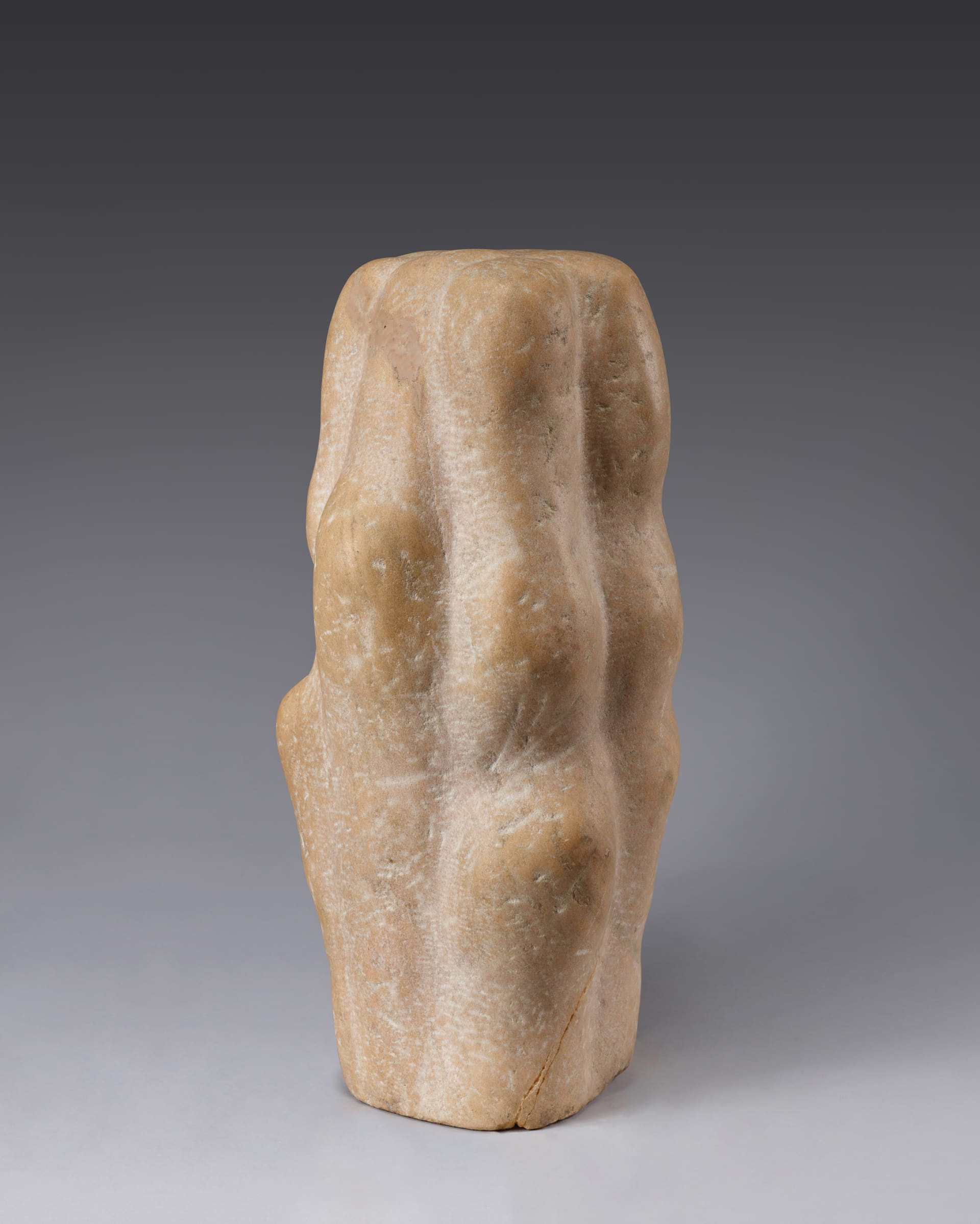
Kim Chongyung
Kim Chongyung (1915-1982, pen name Wooseong) was born in Changwon, Gyeongsangnam-do. He began studying art when he met Chang Louis Pal, an art teacher, who graduated from Tokyo School of Fine Arts and Columbia University. Kim Chongyung learned classic Chinese and calligraphy and won the first prize in calligraphy among middle school students at the 3rd National Art Contest Exhibition for Students. His art was influenced by calligraphy techniques that he had learned from his father and his scholarly contemplation of humanity and nature. He graduated from the sculpture department at Tokyo School of Fine Arts and became a professor of sculpture at Seoul National University. In 1953, he participated an international competition to design a monument to The Unknown Political Prisoner at the Tate Gallery sponsored by the Institute of Contemporary Art in the U.K. He pioneered the profile of abstract sculpture within Korea by submitting his work, Bird to the National Art Exhibition. His experimental artwork reflected his interest in welded sculpture and his use of scrap iron and often featured similar patterns and forms that were consistently repeated yet not identical. Kim’s unique approach has been considered a consequence of his training in Oriental aesthetics, and his desire to adhere to natural forms and the esoteric practice of calligraphy within his modernist sculptural practice.
Find More
-
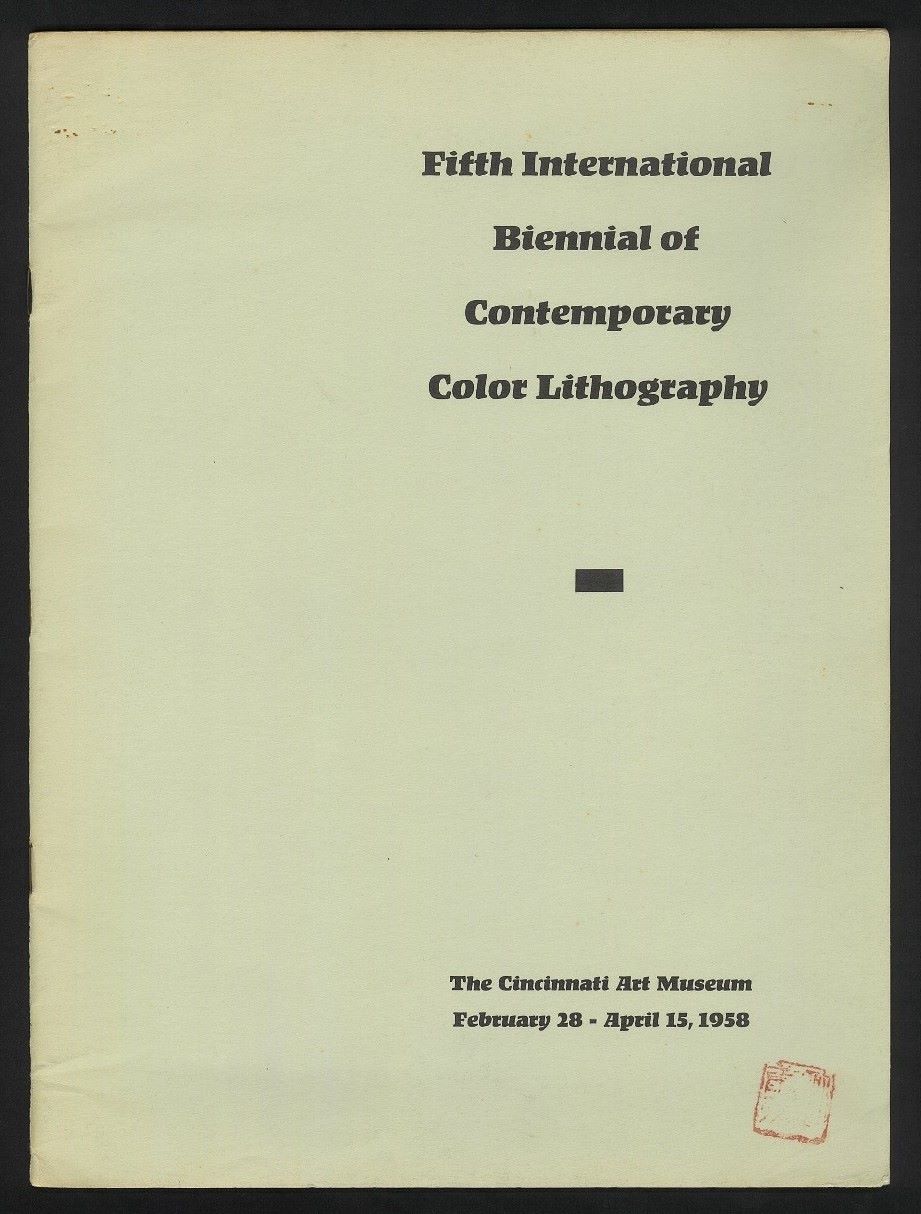
International Biennial of Contemporary Color Lithography
The International Biennial of Contemporary Color Lithography was an international print exhibition held from 1950 through 1960 by the Cincinnati Art Museum in Ohio in the U.S. At the time, there was a printmaking boom in the U.S. sparked by the relocation of Atelier 17, a notable Parisian printmaking studio, to New York in 1940. In the 1950s and 1960s, the International Graphic Arts Society (IGAS) was founded, and several special exhibitions on prints were held, including New Expressions in Fine Printmaking: Ideas, Methods, and Materials (Brooklyn Museum, 1952). In addition, institutions for exploring printmaking, such as Pratt-Contemporaries Graphic Arts Center, Tamarind Lithography Workshop, and Universal Limited Art Edition (ULAE), were built. Under these circumstances, Gustave von Groschwitz, a curator of prints at the Cincinnati Art Museum from 1947 to 1963, organized the first biennial of color lithographs in the U.S. Only works created within two years could be submitted to the biennial, allowing two prints per artist. Korean artists had participated in the biennial since 1958. Yoo Kangyul, Kim Choungza, Choi Dukhyu, Kim Sou, Rhee Sangwooc, and Lee Hangsung took part in the fifth edition in 1958. Their participation in the biennial led to the acquisition of some works by the Cincinnati Art Museum. They were Face and Pagoda by Kim Sou, Winter by Rhee Sangwooc, and Silhouette and Buddha’s Spirit by Lee Hangsung. This marked the first overseas debut of contemporary Korean prints. In the sixth edition held in 1960, Mountain Sentiment and Revival by Lee Hangsung and Study by Bae Yoong won prizes. Starting in 1962, the International Biennial of Contemporary Color Lithography was held as a triennial and renamed International Prints.
-
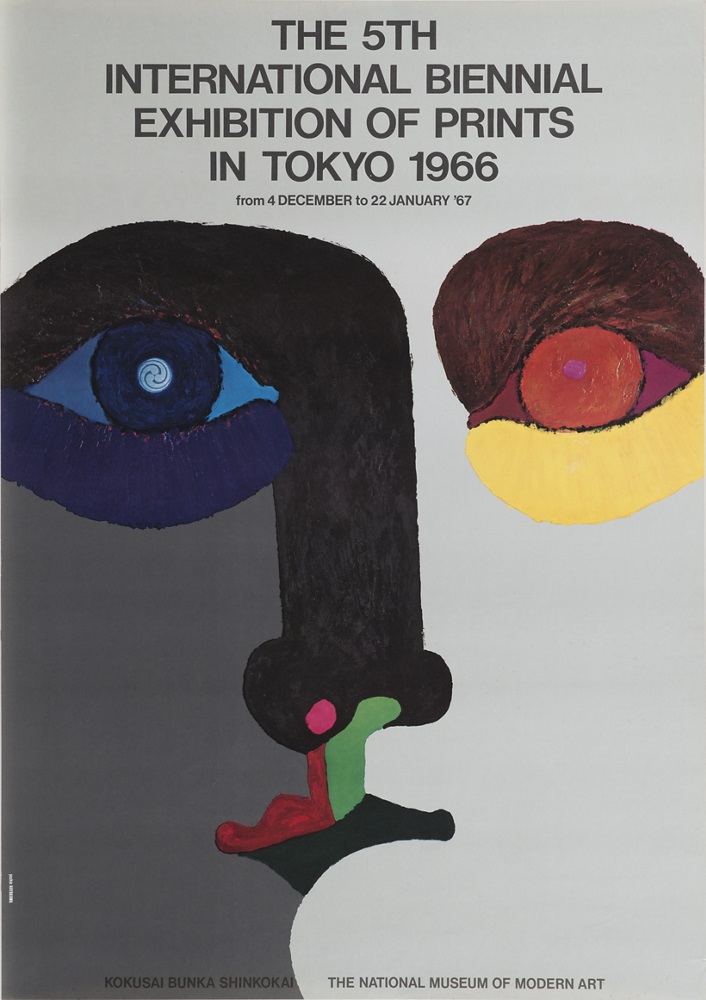
International Biennial Exhibition of Prints in Tokyo
The International Biennial Exhibition of Prints in Tokyo was an international print exhibition held in Japan eleven times from 1957 through 1979. Initially, it was co-hosted by The National Museum of Modern Art, Tokyo and The Yomiuri Shimbun newspaper company. In the fifth edition, the International Cultural Promotion Association (Kokusai bunka shinkōkai) replaced The Yomiuri Shimbun, strengthening the nature of cultural exchange. Over twenty-two years, a total of 1,317 artists (1,098 foreign artists and 219 Japanese artists) participated in the International Biennial Exhibition of Prints in Tokyo, with approximately 3,000 works submitted. The International Biennial Exhibition of Prints in Tokyo is one of the international exhibitions in which a large number of Korean artists took part. This is partly owing to geographical proximity, but active exchanges with Japanese art circles in the 1970s also encouraged their participation. Korean artists consistently participated from the fifth edition to the eleventh. Yoo Kangyul, Kim Chonghak, and Youn Myeungro joined the fifth edition (1966); Bae Yoong, Suh Seungwon, and Ahn Dongguk, the sixth edition (1968); Kim Tchahsup, Ha Chonghyun, and Lee Ufan, the seventh edition (1970); Kim Sangyu, Kim Tschang-yeul, and Kwak Duckjun, the eighth edition (1972); Lee Ufan, Kim Kulim, and Chung Chanseung, the ninth edition (1974); Lee Kangso, the tenth edition (1976); and Suh Seungwon, Shim Moonseup, Kwak Duckjun, Chin Ohcsun, and Lee Ufan, the eleventh (1979). Among these participating artists, Kim Chonghak received an honorable mention in the fifth, and Kwak Duckjun won the Minister of Education Award in the eighth. In the eleventh, Chin Ohcsun won the Minister of Foreign Affairs Award and Lee Ufan won the Kyoto National Modern Art Award. In the eighth, the art critic Lee Il participated as an international judge. The International Biennial Exhibition of Prints in Tokyo exerted a considerable influence upon the development of Japanese contemporary prints and played a role in anchoring prints in the postmodern discourse of “de-genre” and “de-media” in conjunction with contemporary art. Witnessing the interest in prints not just from Japanese art circles but also from the international art community through the exhibitions, Korean artists became more interested than ever in prints, which emerged as a major medium of expression in contemporary art. Since the 1970s, there has been a significant increase in the number of artists working in printmaking.
-
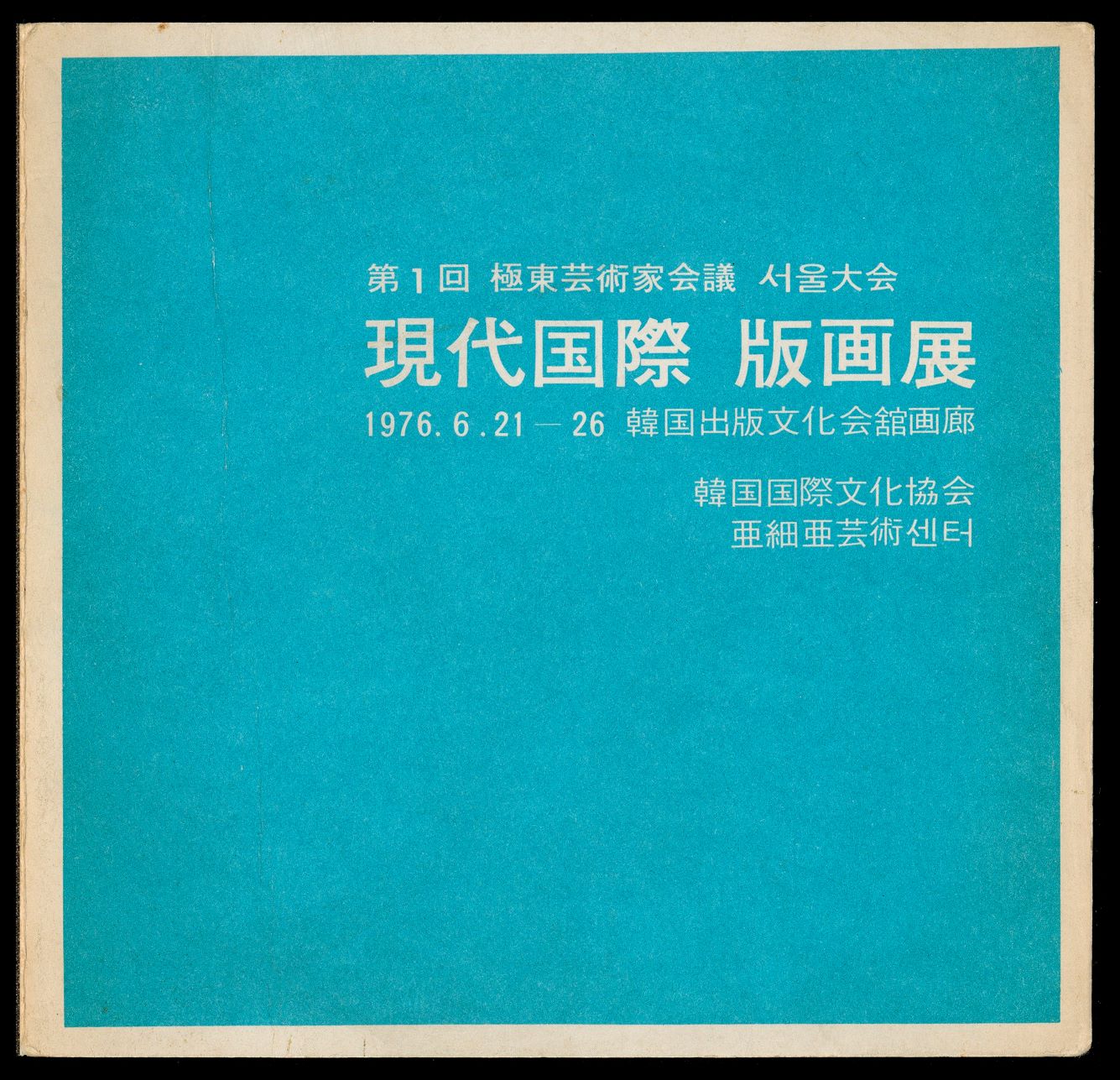
Exhibition of Contemporary International Prints
Exhibition of Contemporary International Prints was held from June 21 to 26 in 1976 at the Korea Publishers Association Hall. It was one of the commemorative programs for the first Far East Artists Conference, which was organized by four Pacific countries—South Korea, Taiwan, Japan, and the U.S.—to promote understanding of each other and friendship among them through art and culture. During the conference themed “Comparative Studies of East Asian Culture and Arts,” the print exhibition was held, and discussions on “Contemporary Prints in Asia,” “Masks and Pantomimes,” and “Types and Styles of Chinese, Japanese, and Korean Music” were conducted. Moreover, the classic Japanese comedy Kyōgen and a joint concert by China, Japan, and Korea were performed, and documentary films from China, Japan, and Korea were screened. The participating artists from South Korea were members of the Korean Contemporary Printmakers Association [Hanguk hyeondae pangwagag hyeophoe], including Kang Whansup, Kang Kukjin, Kim Kulim, Kim Sangyu, Kim Chonghak, Kim Choungza, Baik Kumnam, Suh Seungwon, Youn Myeungro, Yoo Kangyul, Rhee Sangwooc, Lee Seduk, and Han Unsung. This exhibition was one of the outcomes of international exchanges in which the Korean Contemporary Printmakers Association engaged in the 1970s and showed how Korean art had become more active in international exchanges through prints. Furthermore, the fact that prints were selected as a main medium at the first Far East Artists Conference implies that there was a strong international interest in printmaking at the time.






